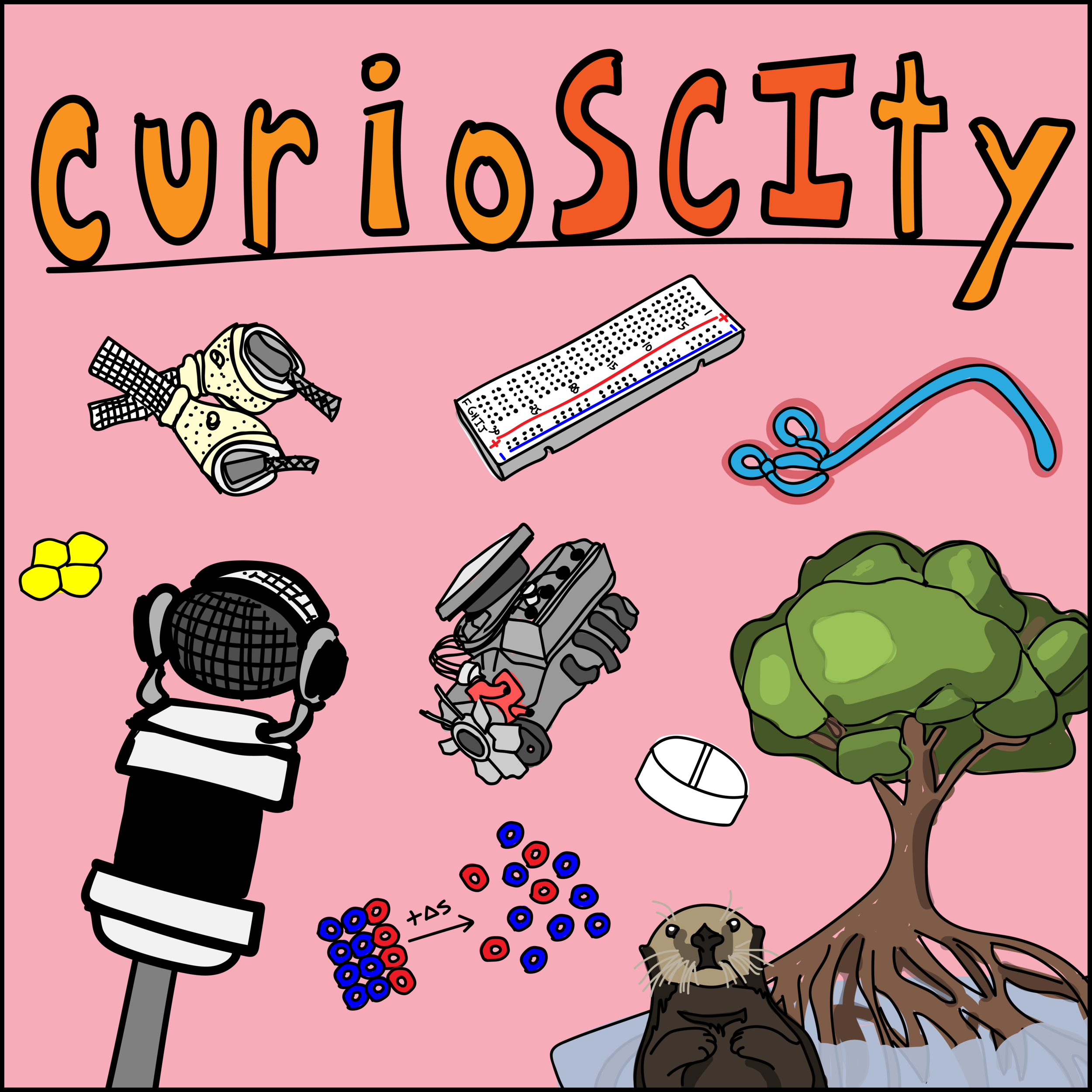59 - Nucleic Acids II (w/ Emily Madden!)
59. RNA (Nucleic Acids II)
With a name like Nucleic Acids I, you’ve have expected more discussion about RNA in episode 8: unfortunately, that episode was chock full of DNA. Today, we’ll discuss the real GOAT nucleic acid: RNA. Let’s learn to be scientifically conversational.
General Learning Concepts
1) Just what the heck is RNA?
a. Ribonucleic acid: It’s its own novel biomolecule; not protein, lipid, or carbohydrate. It encodes for an organism’s genetic blueprint: all of the information required to build and maintain an organism. DNA is contained within a cell, be it animal, plant, bacterial, archaeal, or even in some viruses.
b. RNA Components: Just as you can reduce the overall dish of a seven-layer dip to each of the individual ingredients, you can also reduce RNA into chemical building blocks: nucleotides. There are three important overall parts: 1) a phosphate group (chemical compound made of phosphorous and oxygen atoms), 2) a sugar group (ribose), and 3) a nitrogen-rich base like adenine (A), cytosine (C), guanine (G), and uridine (U). It’s an acid because the molecule has lost a hydrogen and now carries a negative charge and makes the molecule soluble.
c. RNA structure and macromolecular complexes: RNA does not commonly form the famous “double helix” structure that is such a hallmark of DNA (think a twisted ladder). Instead, RNA can form a variety of different conformations based on weak interactions in the molecule that change its functionality drastically.
d. How does RNA contain information? Each sequence of nucleotides gives a distinct line of information. You can almost relate this to computer programming in binary, with T (00), A (10), C (01), G (11). Just as it’s incredible to believe that entire computer programs come from strings of 0’s and 1’s, biological complexity is derived from strings of A, T, G, and C’s. Still, this information is not used in the exact same way within RNA; instead, the message of RNA is more temporal because of RNA’s relative instability.
2) The Central Dogma:
a. What is the central dogma? The definition from the textbook Molecular Cell Biology states “the coded genetic information hard-wired into DNA is transcribed into individual transportable cassettes, composed of messenger RNA (mRNA); each mRNA cassette contains the program for synthesis of a particular protein (or small number of proteins)." In simpler terms: in a cell, DNA is used to make DNA and RNA, RNA is used to make protein. DNA to DNA is replication. DNA to RNA is transcription. RNA to protein is translation.
b. How is RNA different than DNA? Is DNA the only nucleic acid? RNA is ribonucleic acid: it differs from DNA chemically in that it has ribonucleotides (ribose instead of deoxyribose) and that it contains uracil (U) instead of thymine (T). Uracil can still base pair with adenine, so all is well for RNA. RNA does not often occupy the famous structure of DNA, the double helix, but is capable of folding into many different interesting shapes (hairpins, cloverleaves, or just a single strand).
c. Examples of the Central Dogma in non-biological contexts: DNA carries information; that DNA can be transcribed to form RNA, often thought as mRNA (messenger RNA). That RNA can be translated into protein. Think of it as:
i. DNA is a cookbook. A chef reads that cookbook and yells instructions to another cook. Yelling the message is the RNA. That message results in a product; a cooked meal or a protein.
ii. DNA is a high-level executive who only speaks to a middle manager. RNA is the middle manager who speaks to the workforce. The protein is the eventual product that is made from the workforce. This example might be useful because a middle manager might also have a slightly different message than the high-level executive from before: this could be from a variety of different biologically relevant factors.
iii. DNA is a script. A telemarketer reads that script to try to sell you a product. The spiel is the RNA. That message results in a reaction of you potentially buying a product; a successful purchase or a protein.
iv. These are all useful examples because even though most cells contain the same copies of DNA, they can’t all use DNA in the same way. You wouldn’t want your liver cells beating like a heart; they might have the DNA instructions to do so, but the DNA might be inaccessible to make RNA, the RNA might be degraded quickly (weak voice for reading instructions), or so on.
3) Examples of current RNA research
4) Fun Tidbits
a. The RNA Earth Hypothesis: In episode 63, we’ll discuss a theory of how biological information may have developed called the RNA Earth Hypothesis.
b. No organism known to humans have an RNA genome: … except for viruses. But by a technicality, many do not consider viruses alive.
c. Naming conventions: tRNA, rRNA, snRNAs, miRNA, siRNA… They’re all types of RNAs that have been categorized by their structure or their information content.
5) Solicited Questions
a. Why is RNA hard to work with in lab?


